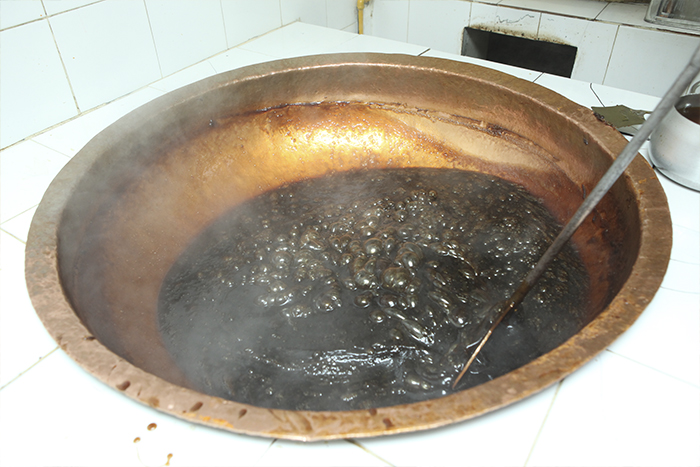
Omani halwa, kahwa and shuwa are foods that are synonymous with Oman’s culture and tradition. Omani halwa is traditionally made with a few simple ingredients. Ghee, tapioca flour and water are the primary constituents of this centuries-old dessert. Earlier dates were the standard sweetening agent but now some halwa makers use sugar to make their version.
Cardamom and chopped nuts are also used. Another exotic ingredient that is used in making halwa is saffron,originally brought in from Iran and the Indian subcontinent. Sometimes rose water is also used to give it a signature aftertaste. Halwa is traditionally offered as a symbol of welcome to guests and is served alongside Omani kahwa. Kahwa is a staple of Omani’s culture and hospitality.
Kahwa or coffee dates back to the era when camel caravans often made arduous journeys across the deserts to bring and send supplies from distant towns. Kahwa, which is bitter, yet flavoursome, was traditionally served with dates and other dried fruits.
It balanced the bitterness of the coffee, while complementing the flavour of the cardamom, and enhance the invigorating effects of the coffee.
Another traditional delicacy of Oman is shuwa that forms the cornerstone of the Sultanate’s culture. Consisting of tender cuts of meat that have been slowly cooked over a burning bed of coals after being rubbed with a traditional blend of herbs and spices; it prepared generally during Eid Al Adha, or family celebrations and feasts.
A sacrificial goat is first skinned, and its choicest cuts are cleaned and rubbed with a spice mix. Hot coals are first poured in a pit and the meat is then placed in a dish and set above the coals.
To allow the heat to stay in, this ‘pit’ is covered with aluminium foil and banana leaves. The entire preparation is then allowed to cook for several hours at least, or even a day. Shuwa is eaten with rice and is served on a large platter.